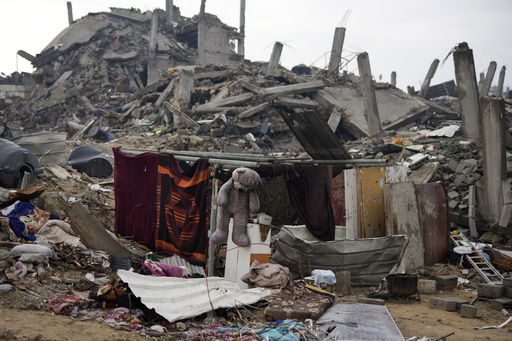
JERUSALEM — As the ceasefire between Israel and Hamas enters its third week, concerns are rising that the delivery of tents and temporary housing to Gaza may not meet the agreements established for the initial stage of the truce. This shortfall is at the center of a conflict that poses a threat to the fragile peace.
Hamas has announced that if the flow of essential supplies, including tents and pre-fabricated homes, does not increase, it will delay the release of three hostages scheduled for Saturday. They highlight the dire situation in Gaza, where many residents remain displaced, subsisting amid the remains of destroyed buildings. In response, Israeli authorities, including Prime Minister Benjamin Netanyahu, have rejected Hamas’s claims and indicated that a lack of timely hostages’ release could lead to a resumption of military operations.
Challenges in delivering adequate shelter have arisen primarily because initial aid efforts focused on food and basic necessities due to the urgent hunger crisis within Gaza. The enforcement of stringent Israeli inspections and limitations on types of materials allowed into the area have added further complications. However, there are optimistic signals from both Egyptian and Hamas officials that progress is being made to resolve these disagreements, which could facilitate the smooth release of hostages as initially planned.
The terms of the ceasefire outline that in its first 42-day phase, Israel is obligated to permit the entry of a minimum of 60,000 temporary housing units and 200,000 tents, in addition to specific equipment for rubble removal. Furthermore, it is expected that urgent repairs will begin on Gaza’s severely damaged infrastructure, including its power, water, sewage, and communication systems, along with preparations for rebuilding the homes that have been destroyed in the conflict. These efforts are being coordinated under the supervision of the United Nations and the mediators from Egypt and Qatar.
There are warnings from the U.N. that simply clearing away the debris could take years, particularly if hostilities reignite and Israel resumes its airstrikes. The uncertainty cast by former U.S. President Donald J. Trump’s vision for a grand rebuilding project in Gaza, described as the “Riviera of the Middle East,” adds to the complexity of the situation. Presently, the deal mandates that Hamas must release 33 Israeli hostages in exchange for around 2,000 Palestinian detainees. To date, Hamas has released 16 hostages, alongside five Thai individuals not included in the agreement.
Reports indicate that so far, Israel has allowed only 20,000 tents to enter Gaza since the ceasefire commenced on January 19 and has not permitted any temporary housing or heavy machinery. The Israeli defense body, COGAT, disagrees with some of these assertions, contending that the number of tents allowed in is higher. Additionally, U.S. and Israeli officials, as well as aid workers monitoring the deliveries, have confirmed that pre-fabricated homes have yet to be allowed entry.
Complications in the efficient delivery of shelter have stemmed from several factors, including the shift in focus to food and water supplies during the outset of the ceasefire. Shaina Low from the Norwegian Refugee Council notes that wrapping up the immediate food crisis took precedence during the initial weeks. Anticipations of “mass population movements” led aid agencies to delay sending tents, as displaced individuals would struggle to carry additional burdens alongside their belongings. The recent statistics show that over 586,000 Palestinians have moved north since late January, with more than 56,000 moving south.
Efforts to increase the supply of shelters swiftly faced logistics challenges as agencies sought to meet a target of 600 truckloads of supplies daily. Tania Hary of Gisha expressed that coordinating the inflow of 60,000 temporary homes represents a substantial logistical task. Moreover, Israel classifies certain items as “dual-use,” meaning they might be repurposed for military use, which decelerates approval processes for essential supplies such as “mobile homes,” large tents, sanitation equipment, and generators.
Mediators are reportedly hopeful about resolving the disputes by Saturday to restore the ceasefire’s momentum. An Egyptian official familiar with the discussions indicated that both parties appeared to be nearing a resolution, with Israel reportedly agreeing to enhance its deliveries of tents and shelter. Meanwhile, Hamas official Mahmoud Merdawi expressed that while there are “positive signals” regarding the hostages’ release, the group awaits further guarantees from Israel about the humanitarian aid provisions.

